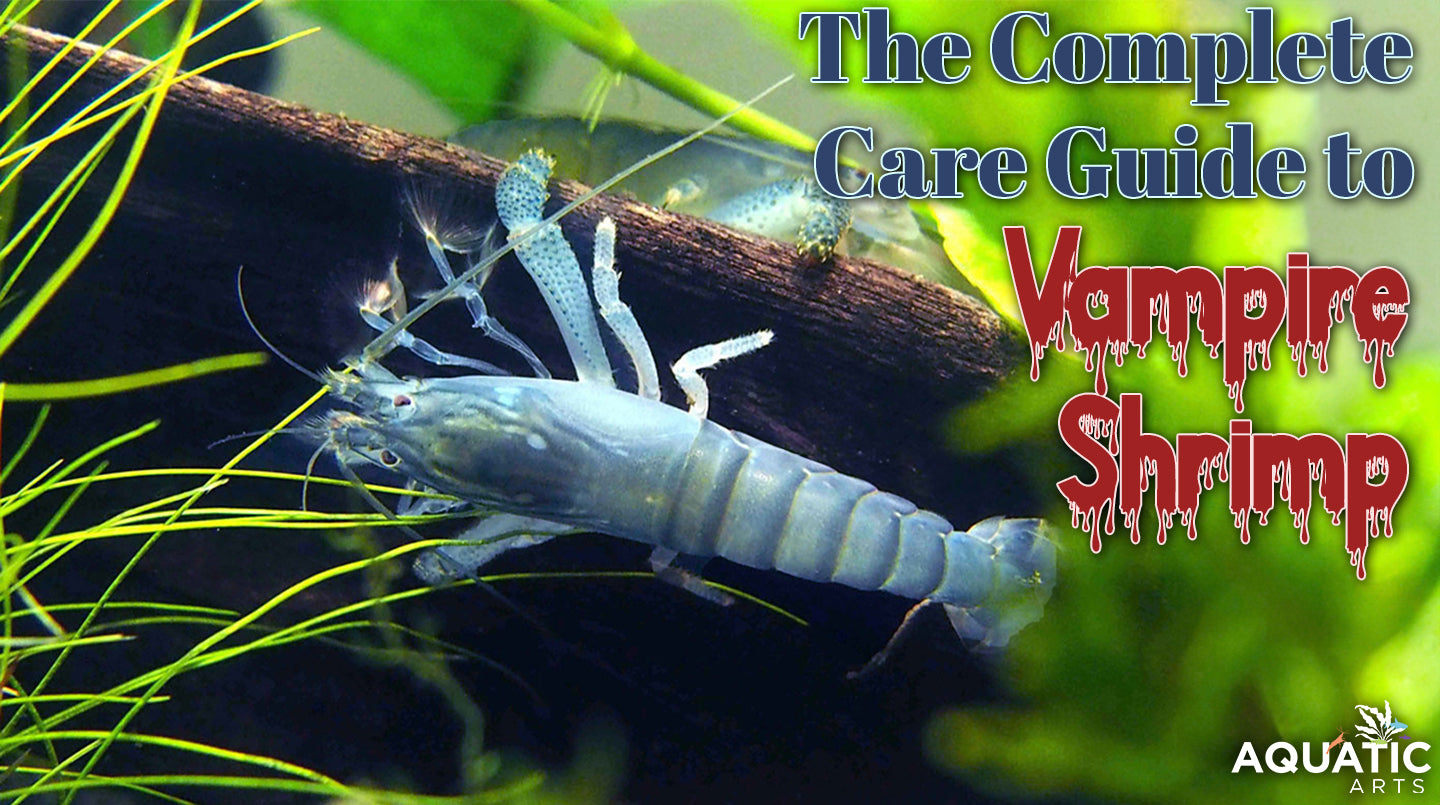The Complete Care Guide to Vampire Shrimp

Vampire Shrimp Care Guide
Vampire Shrimp Overview
While Vampire Shrimp (Atya gabonensis) look remarkably similar to crayfish, they nevertheless are Freshwater Shrimp. They are one of the most intriguing shrimp species, with the ability to change colorations and live a longer life than other freshwater shrimp species.
Most Vampire Shrimp grow between two and three inches in length, but reportedly, they can grow as big as six inches. Vampire Shrimp are broader than most freshwater shrimp, which leads to them being mistaken for crayfish.
Vampire Shrimp are on the threatened species list and can only be caught in small quantities in West Africa, most commonly in Northern Nigeria. These shrimp also have a few distinct water requirements that differ from other shrimp species. Vampire Shrimp do share similar parameters to other filter and fan feeders like Bamboo Shrimp and Bloom Shrimp.
In an aquarium setting, they primarily eat by filter feeding in the water column and need to be fed in an aquarium to survive. It's best to have a fast water setup and place high-quality crushed flakes or powdered food into the water column for the shrimp to eat.
Despite their name, Vampire Shrimp have a peaceful disposition and make for exceptional tank mates. Their name references their nocturnal nature and appearance of having fangs. The shrimp species also goes by numerous other names, including Viper Shrimp, African Fan Shrimp, and African Filter Shrimp.
The Origin of the Vampire Shrimp
The Atya gabonensis was discovered in Gabon, Africa, in 1875. While initially thought to be endemic to Gabon, populations were later found in other countries in West Africa. For a time, in the 1960s, they were a delicacy and exported to Europe. Later, aquarists took an interest in the Atya gabonensis and other fan-feeder shrimp.
Obtaining a Vampire Shrimp can be difficult, as they are rare and hard to find in pet shops. However, Aquatic Arts does have Vampire Shrimp in stock for the hobbyist interested in joining the cult following around the species.
Tank Size, Environment, and Water Parameters for the Vampire Shrimp
Vampire Shrimp greatly benefit from being in a tank with a significant amount water. It’s advisable to start with at least a 20-gallon aquarium, which provides enough room for them to explore. The tank’s size also allows necessary water current movement for feeding opportunities.
It’s important to note that there should never be any traces of metal or excess waste products in the water column — these are highly toxic to Vampire Shrimp. A water column refers to all the water in an aquarium, from the top of the substrates to the surface water.
No matter the species, every shrimp tank should have plenty of live aquatic plants. Plants offer shrimp refuge and a place to play. Another benefit to living plants over plastic ones is that they produce natural edible matter, serving as a feeding ground for species like the Vampire Shrimp.
Recommended water parameters for Vampire Shrimp:
Temperature between 75-84 degrees Fahrenheit
pH between 6.8-7.5
dGH between 6-20
dKH between 2-15
TDS between 150-300
The Vampire Shrimp's Coloration, Behavior, and Lifespan
While there’s only one strain of Vampire Shrimp, their color can shift often and can be determined by their environmental conditions, substrates, and diet. This ability enables them to blend in with their surroundings when threatened by a predator. Possible colorations include blue, green, red, brown, pink, yellow, and purple.
Despite their tough and terrifying moniker, Vampire Shrimp are prone to anxiety and do not like sudden movements, lights, or changes to their environment. They are nocturnal creatures who do most of their activities during the night — much like Dracula, but without the bloodsucking.
Vampire Shrimp can have a long life span, living as long as five years. Many common issues Vampire Shrimp may have are easy to avoid by properly maintaining a healthy tank and filtration system.
Tank Mates for Vampire Shrimp
Vampire Shrimp are incredibly peaceful creatures and make for great tank mates. They do not bully smaller shrimp, and fish will not target them because of their larger size. Some of Aquatic Arts’ recommended tank mates include Sakura Red Cherry Shrimp, Snowball Shrimp, Amano Shrimp, Black Mystery Snails, Ramshorn Snails, Guppies, and Cherry Barbs.
To learn more about all of Aquatic Arts’ offerings, visit www.aquaticarts.com.
Aquatic Arts
© Aquatic Arts 2022




